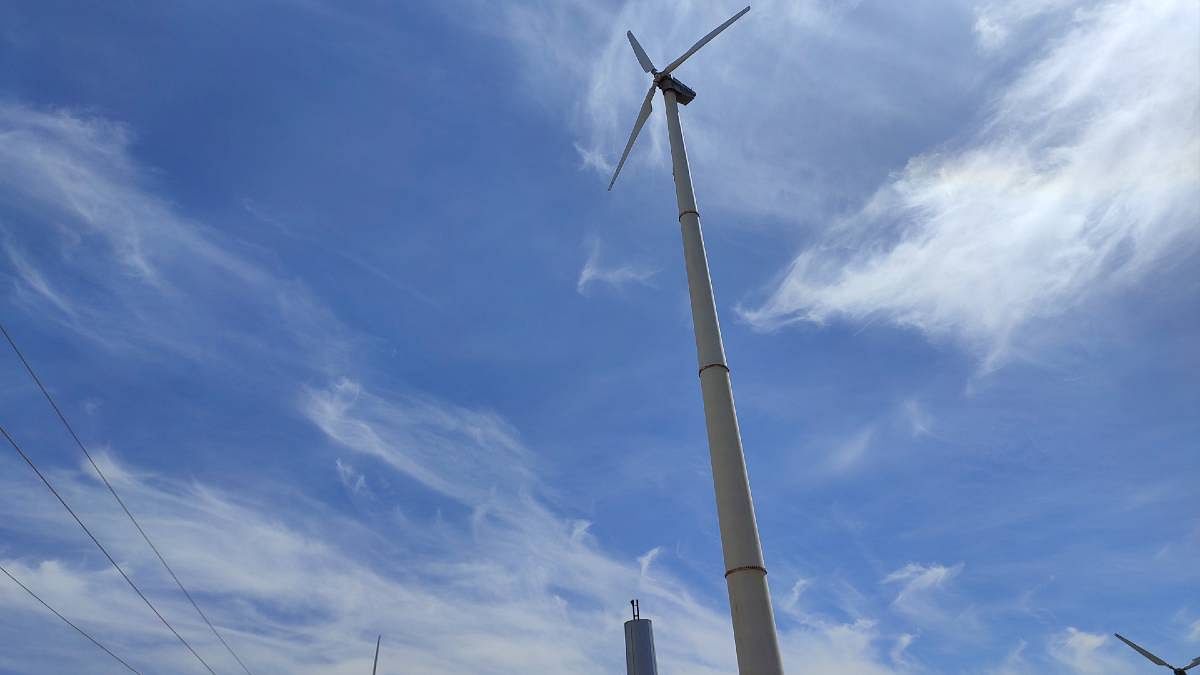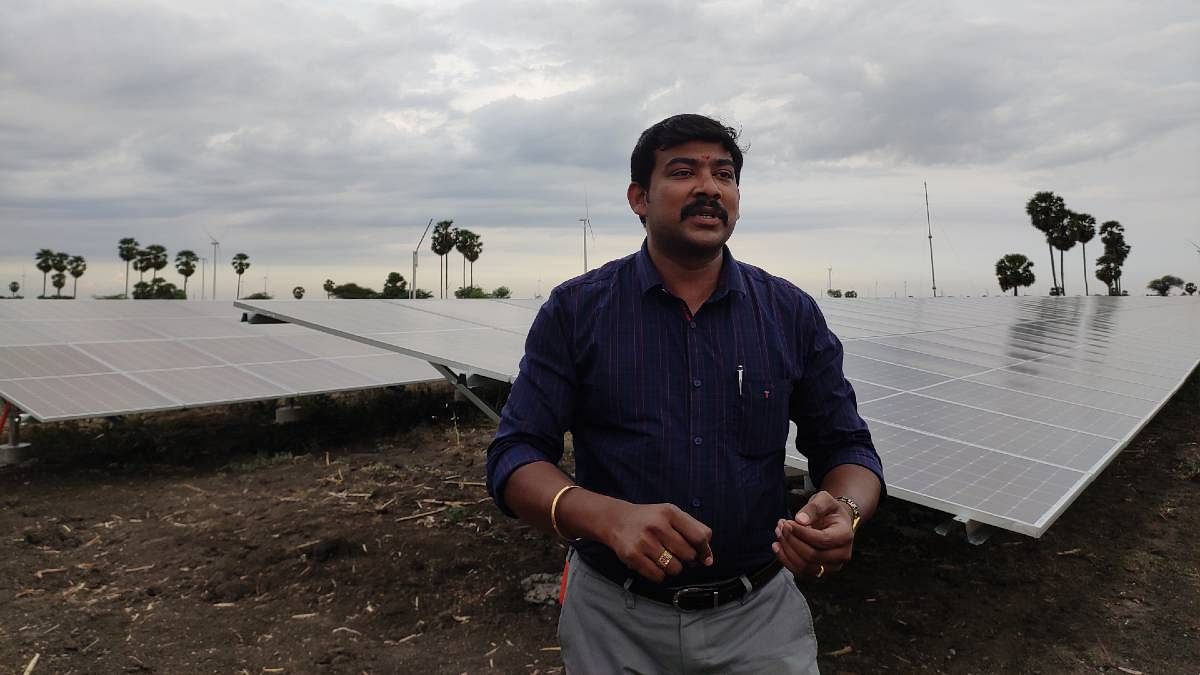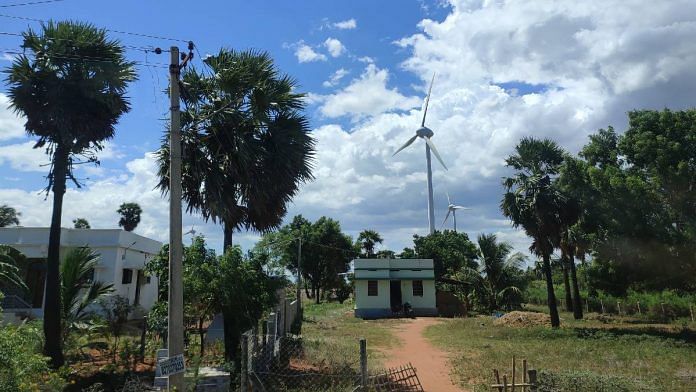Kanyakumari: Industry experts have welcomed the government’s 14 July announcement to do away with the e-reverse auction process for wind energy, but say it’s only one of the many steps needed to rejuvenate a sector that has, in recent years, stagnated.
In the e-reverse auction process — announced in 2017 — wind energy projects would be awarded to developers with the lowest bid, leading to artificially low prices and what several experts called “unhealthy competition” in the industry.
“We believe that this (doing away with the e-reverse auction process) will lead to less aggressive competition, and it’s a step in the right direction,” Parag Sharma, chief executive officer at renewable energy platform O2 Power, and president of the Wind Independent Power Producers Association, told ThePrint.
The wind energy sector is among the oldest renewable technologies in India, started in the 1980s. Investments boomed in the mid-1990s and continued on an upward trajectory till 2017, when the e-reverse auction system was announced. Before this, the sector relied on feed-in tariffs, in which the price of electricity reflected the cost of production as well.
The reverse auction system was introduced to increase competition and bring down the cost of producing wind energy. Instead, several wind turbine manufacturers shut shop and investments to the sector shrunk.
The ministry’s decision comes after years of wind manufacturers and developers demanding the system change so investments to the wind sector become more tenable.
The shift in policy is also necessitated by India’s new climate pledges, two of which have to do with ramping up renewable energy sources. In the Glasgow summit last year, Prime Minister Narendra Modi announced that by 2030, India would increase its non-fossil fuel energy capacity to 500 gigawatts (GW) and fulfill 50 per cent of its energy requirements through renewable sources.
In a step in this direction, the government also announced last week that states would have to increase their renewable purchase obligations (RPO), which means that between 2023 and 2030, states would have to source 24.61 per cent of their energy demands from renewable sources, and increase it to 43.3 per cent by the end of the decade.
The wind RPO target is between 0.81 and 6.94 per cent.
“The targets are achievable, and India will be able to meet its climate goals. Our resources otherwise would be going to waste, so it’s a matter of taking the right policy decisions to harness these resources,” said Kasturi Ranjan, chairman, of the Indian Wind Power Association.
Also read: How Gujarat is building ‘world’s largest’ solar power park, close to its border with Pakistan
The need for repowering
Despite years of stagnation, several studies suggest India’s wind potential is high.
According to the Global Wind Energy Council’s (GWEC) Market Outlook, written in June 2021, “Over 2021-25, India is expected to install nearly 20.2 GW of wind capacity, 90% of which will come from central tenders, followed by corporate procurement and lastly state markets.”
Offshore wind, in which turbines are placed in the sea where winds are stronger, could be a possibility after 2025, the GWEC says.
India currently has an installed capacity of 39.25 GW, the fourth highest in the world. However, this is just 28 per cent of its target, which is to install 140 GW by 2030. Tamil Nadu accounts for 25 per cent of this installed capacity, at 9,867 MW. Gujarat follows, with 9,419 MW of installed capacity.
The Muppandal Wind Farm in Kanyakumari is the largest onshore farm in the world, with a potential of 1500 megawatts (MW). Turbines dot its landscape for several kilometers at a stretch. But these wind turbines are also among the oldest, some of them over 25 years old.
“These are old models, each having a capacity of only 250 kilowatts,” said an official with Ramco Wind Farms on condition of anonymity. Ramco established its wind farm in 1993 and owns 227 turbines in the farm. “The wind potential here is the highest, so if we repowered these machines the generation would be a lot more, but it’s not easy,” the official added.

Simply put, repowering means replacing older turbines with newer, higher capacity ones or retrofitting them with more efficient components. Turbines can also be repowered by increasing their height, where wind speeds are stronger.
A 2018 study by the Indo-German Energy Forum found that sites using old turbines “currently have an average capacity utilisation factor (the ratio of actual output to maximum output) of only 10% to 14%,” whereas “had those sites been available for modern wind turbines to be installed, the effective CUF would have been at least 25%.”
The GWEC predicts India can add up to 4.5 GW of wind energy through repowering. In 2016, India came up with a repowering policy that allowed repowering for turbines under 1MW power, but it has had very few takers.
“The reason is that there is no financial incentive to go for repowering. There are no benefits, and the costs are as high as setting up a new wind turbine. It’s not financially viable,” O2 Power CEO Sharma said.
Francis Jayasurya, India director of the GWEC, added that for repowering to be successful, the electricity grid would also need to be adjusted.
“If a turbine is being repowered, a big challenge is in the availability of a model that suits the site as well as grid management. The grid infrastructure will have to be removed and upgraded simultaneously,” he said.
At the moment, offshore wind is considered infeasible because of high costs and ongoing research and development on turbines. In a discussion paper released 27 July, The Energy Resources Institute (TERI) recommended investments to offshore wind start despite high costs.
“Our recommendation is to identify the most attractive offshore sites with a large potential, and invite bids for a small part of that area while covering costs of evacuation and transmission. This should be done to discover the costs and create capacity,” said Ajay Shankar, distinguished fellow at TERI.
Decentralising wind energy
In Tamil Nadu, developers are responsible for setting up their own evacuation infrastructure — a facility that allows generated power to be transmitted to the grid. In other words, developers must pay for transmission of electricity to a substation.
For large, well established developers like Ramco and Suzlon that already have long-standing power purchase agreements, or can afford to build substations of their own, this cost is relatively smaller.
Arul Balan, a developer with a solar and wind plant in the outskirts of Tuticorin, told ThePrint these costs can be difficult for small scale players to bear.

“The capital investment is high for a developer to set up infrastructure in a place that might have good potential, but is far from the grid substation, like in a rural area.
“Potential is available in places that are not connected to the central transmission grid, which can be utilized by the small and medium investors. But they require sufficient power evacuation infrastructure,” he said.
The reporting for this story was made possible through the author’s participation in a workshop by the Earth Journalism Network.
(Edited by Poulomi Banerjee)
Also read: Bad news for renewable sector — study says climate change will hit solar & wind energy in India



